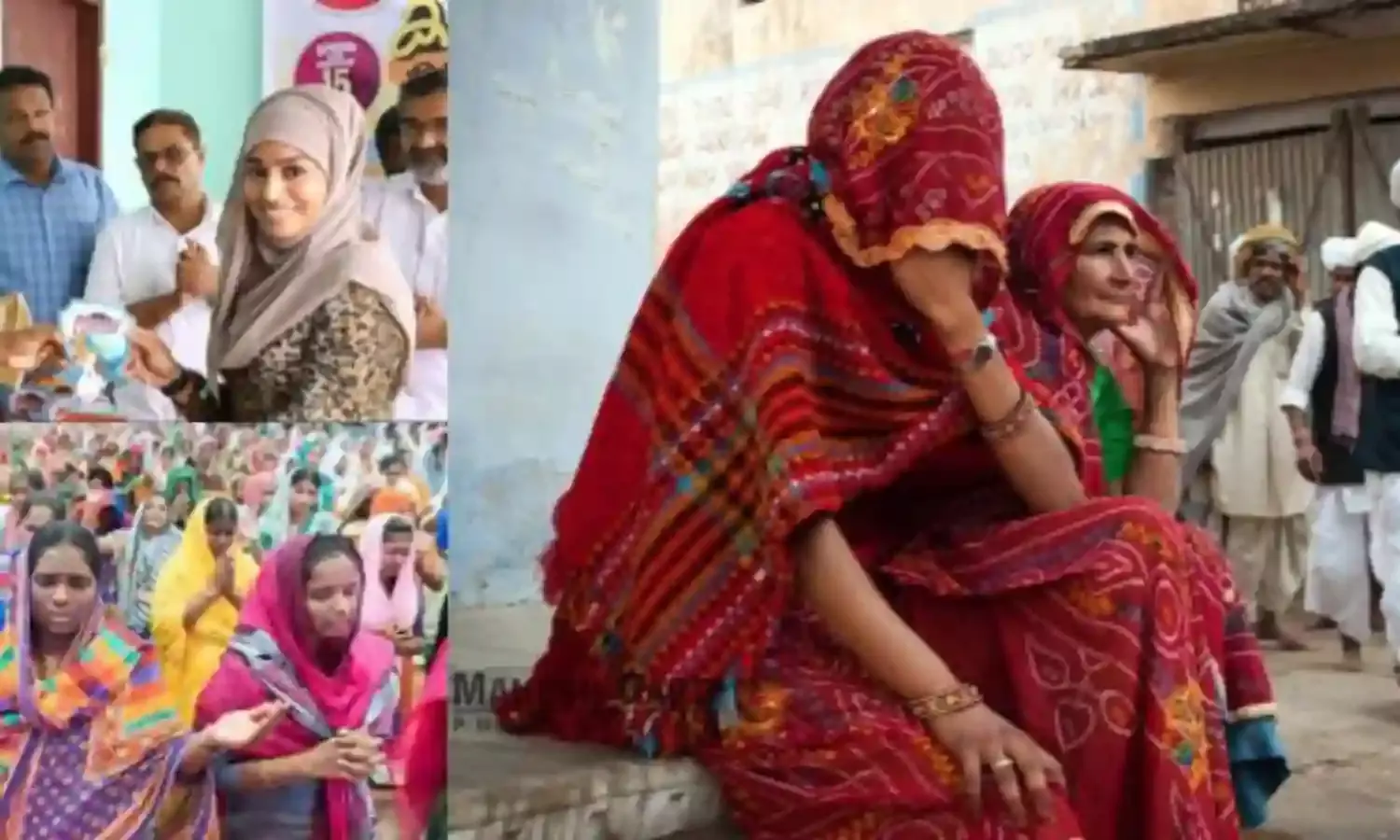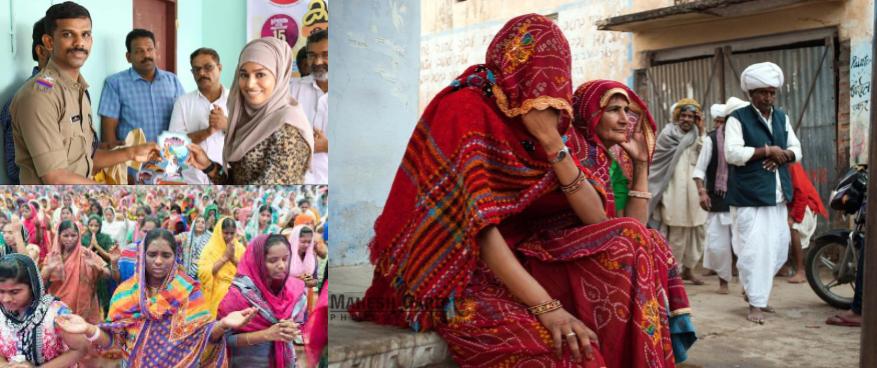THE HIJAB STORY
Free choice for many

One definition of ‘modesty’ is behavior, manner, or appearance intended to avoid impropriety or indecency. This covers the Islamic custom of keeping the girls and women covered from the eyes of men and the public.
In a Karnataka institute of education, the authorities suddenly decided not to allow girls into the school premises if they wore the ‘hijab’ which is not only a part of their cultural upbringing but also identifies their faith. This led to such conflict of interest leading to riots that a three-day ban was instituted in Karnataka for educational institutes.
This is clearly rooted in patriarchy through history but today, it also has evolved into a matter of choice and not compulsion for the girls concerned. Let us take a closer look at the whole issue.
Islam began as a small faith community in the Arabian Peninsula. The community was established in Medina by the prophet Mohammed (c. 570–632 CE). From there it spread through the Middle East to Saharan and sub-Saharan Africa, to Central Asia, and to many societies around the Arabian Sea.
After Islam was established in the Middle East and North Africa, it made significant inroads into Europe, as well. Scarves and veils of different colours and shapes were customary in countless cultures long before Islam came into being in the seventh century in the Arabian Peninsula (which includes present-day Saudi Arabia).
To this day, head coverings play a significant role in many religions, including Orthodox Judaism and Catholicism.
A hijab is a veil worn by certain Muslim women in the presence of any male outside of their immediate family or sometimes by men in general, which covers the head and chest. Another interpretation can also refer to the seclusion of women from men in the public domain, whereas a metaphysical dimension, may refer to "the veil which separates man, or the world, from God.”
Since the seventh century, Islam has grown to be one of the major world religions. As it spread through the Middle East to Saharan and sub-Saharan Africa, to Central Asia, and to many different societies around the Arabian Sea, it incorporated some local veiling customs and influenced others. But it is only recently that some Islamic states, such as Iran, have begun to require all women to wear the veil (in Iran it is called the chador, which covers the entire body).
Critics of the Muslim veiling tradition argue that women do not wear the veil by choice, and they are often forced to cover their heads and bodies. In contrast, many daughters of Muslim immigrants in the West argue that the veil symbolizes devotion and piety and that veiling is their own choice. To them it is a question of religious identity and self-expression.
There are four kinds of coverings Muslim girls and women are mandatorily must use – also by those who fall within Judaism – differing in different schools of thought and also in different geographical locations. These are the headscarf or the hijab, the niqab, the chador and the burkha.
Muslim religious writings are not entirely clear on the question of women veiling. Various statements in the Quran and the Hadith (statements attributed to the prophet Mohammed) make reference to Mohammed’s wives veiling, but it is debatable whether these statements apply only to the Prophet’s wives or to all Muslim women.
The burqa is primarily urban, a symbol of non laboring status, and may conceal fashionable modern apparel. (Instead of the burqa, village women, whose farm and household work would be hindered, wear long, loose, baggy shirts and trousers and a large head scarf that they pull across the face in the presence of men outside the specified family circle. Some nomadic women do not cover their faces.)
The Qu'ran (Sura XXIV.31) directs women to "be modest, draw their veils over their bosoms, and not reveal their adornments" except to certain specified male relatives, slaves, eunuchs, women, and children. In practice, this has resulted in the system of purdah (literally, "curtain")-the enforced seclusion of Muslim women and their concealment under special outer garments in any situation where they might encounter non-familial men. These garments have taken different forms in various parts of the Islamic world.
One source claims that the burqa is a custom Muslims took over from the Byzantine Christians. The Quran talks about the need for both men and women to dress modestly. “Modest appearance” means that erogenous parts of the body should be covered suitably. This modest dress or hijab, meant both for men and women, has been historically understood in diverse ways among different Muslim communities.
The common word used for all these covered robes worn by Muslim women mostly is “purdah” which means curtain that refers to using a cover to guard the girls and women from men everywhere. But in India, burqa is more commonly used than chador or niqab and “purdah” has a much wider meaning and use that points out at the forced invisibility of girls and women so far as their physical body is concerned.
There have been attempts, mainly political, to ban the use of the purdah in different countries without success because in some countries and cultures, a percentage of women are all for the burqa and do not want it banned.
The burqa, originally invented to restrict the visibility of women to the outer world and their mobility too, has another edge. Srivastava brings this across with the right dose of irony and humor. If the burqa invests women with confinement of different kinds, it also offers them the opportunity to express their emotions through facial gestures others cannot see.
On the other hand, they can shed silent tears of pain, of suffering, of helplessness, of loss because loud wailing is rendered needless and futile as no one listens to a woman’s weeping. Women who are not constrained by the burqa are constrained by the same limitations of movement and choice and dictation and any violation of the patriarchal expectation is severely dealt with.
This enforced invisibility, in the shape of a burqa, or, hijab, or chador or scarf, is violence. Is the hijab a ghetto patriarchy designed for women? Is it to ‘protect’ their women from the ‘dangers’ lurking in the world outside? Or is it one way of asserting ‘property rights’ over mother, wife, daughter and sister? Is it a political strategy to keep them within confines so that other men do not see them and they do not set eyes on men beyond the immediate family? Or, is it a form of protection for the men, who, consciously or otherwise, feel threatened by the women who had mothered them, or slept with them, or looked up to them as father, brother, husband or son? Is it a form of first appropriating and then encroaching into their space – geographically, morally, emotionally?
But right into the first two decades of the 21st century, should not the choice of wearing or not wearing the hijab best left to the girls and the women concerned? Let them decide once and for all, whether they will or will not wear the hijab. Either way, it is not an issue that should be politicized to lead to violence under any circumstance.




